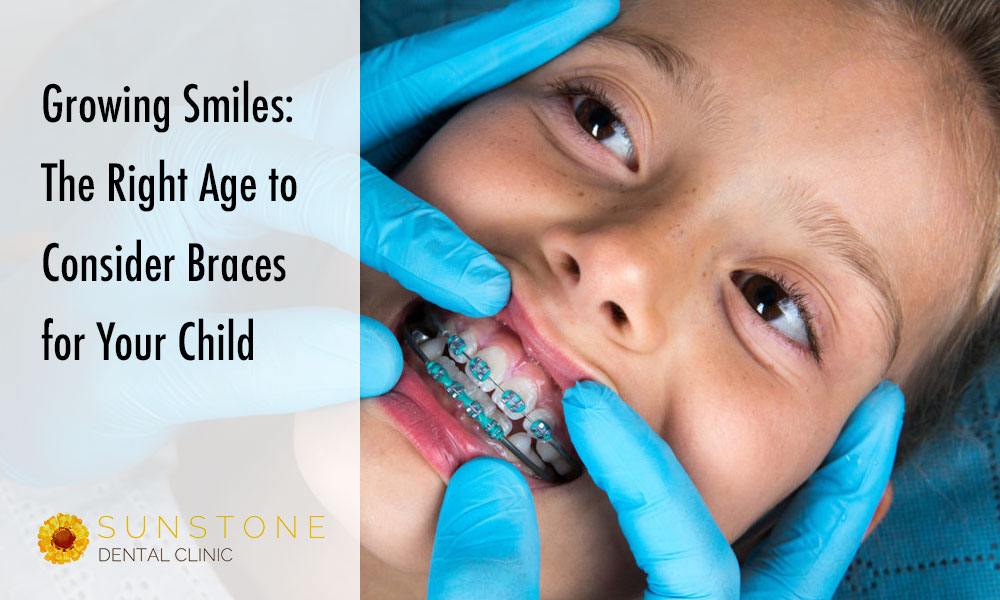Growing Smiles: The Right Age to Consider Braces for Your Child

Is your child’s smile affected by crooked or misaligned teeth? Are you wondering when is the right time to consider braces for them? Look no further – in this article, we will discuss the optimal age to think about braces for your child and how they can benefit from early orthodontic treatment.
What are braces?
Signs that your child may need braces
- Crooked or crowded teeth: If your child’s teeth are visibly misaligned, braces might be necessary to prevent difficulties in cleaning, reducing the risk of tooth decay and gum disease.
- Early or late loss of baby teeth: If your child loses baby teeth significantly earlier or later than peers, it might indicate underlying dental issues affecting spacing or permanent tooth eruption.
- Difficulty chewing or biting: Trouble eating may signal misaligned teeth or an improper bite, issues that braces can help correct, improving their ability to eat comfortably.
- Breathing through the mouth: Mouth breathing could indicate orthodontic problems, possibly linked to a narrow palate or misaligned jaw, which braces can address.
- Thumb sucking or tongue thrusting: Prolonged habits like thumb sucking or tongue thrusting can impact teeth and jaw alignment. Addressing these early on is crucial to minimize the need for extensive orthodontic treatment later.
Benefits of early orthodontic treatment
Early use of braces brings various benefits to your child’s oral health and overall well-being. Here are key advantages:
- Preventing Future Dental Problems: Addressing orthodontic issues early can prevent severe dental problems like tooth decay, gum disease, and TMJ disorders in the future.
- Improved Facial Aesthetics: Braces enhance your child’s appearance by aligning teeth and improving their smile, boosting self-esteem and social interactions.
- Better Oral Hygiene: Straight teeth are easier to clean, reducing the risk of cavities and gum problems. Braces support optimal oral hygiene for a healthier mouth.
- Proper Jaw Development: Early orthodontic treatment guides your child’s jaw growth, addressing alignment issues and improving their bite to prevent discomfort or pain.
- Shorter Treatment Time: Correcting orthodontic problems early often leads to shorter treatment times. Early intervention utilizes natural jaw growth, making the treatment process more efficient.
